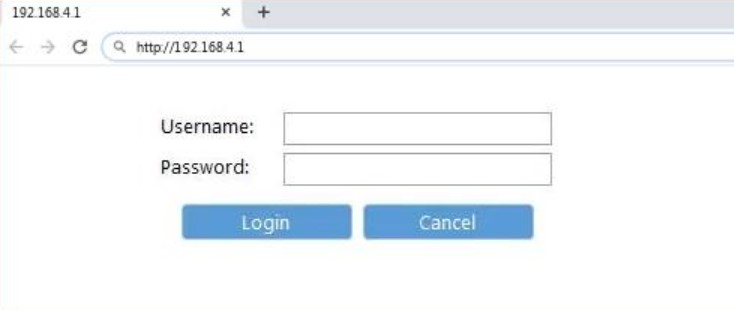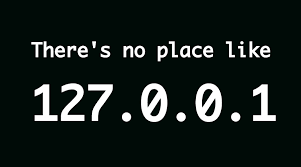192.168.4.1 Default Login Admin – How to Login with 192.168.4.1 IP?
Unable to Login with 192.168.4.1 IP Address? Find the Default router login and password for your device at 192.168.4.1. Type http://192.168.4.1 [Login Admin] to access the admin page.
All search results for the private IP address 192.168.4.1 are available here. By clicking the following link for http or HTTPS, you may view the built-in HTML webpage and learn how to log into your internet router, modem, extender, or wireless access point. Previously we’ve discussed the 192.168.50.1 login steps.
- Also Read: Calix Router Login
The most popular default login and password to access the administrative interface are “admin” or “setup,” and you may find the default settings on the back of a TP Link, Netgear, or D-Link wireless (or Wi-Fi) router. You could decide to reset the router if this doesn’t work for you. You must hold down the reset button for roughly 10 seconds to accomplish this. You can log in using the information listed on the sticker and the factory settings will be restored.
192.168.4.1 Default Router Login Guide
Although routers can utilize a variety of IPs as login addresses, 192.168.4.1 is one of the more common ones. It should be noted that different router brands have different default IP address access, and users can typically change the default address.

The internal network WIFI wireless router login method is often difficult to find. Try visiting the following URL to access the admin interface: http://192.1684.1. Refer to our page on Default Router username password, If you are having trouble connecting. Please refer to your Reset Router Username Password, If
you can’t remember your login or password.
192.168.4.1 IP Address Default Login Username & Password
After typing the exact URL, you will be redirected to your router admin area. Enter the appropriate username and password from the list below to enter the IP address admin interface.
IP Address | Username | Password |
192.168.4.1 | admin | admin |
192.168.4.1 | admin | password |
192.168.4.1 | admin | 1234 |
192.168.4.1 | admin | – |
Still, you’ve got the question arising in your mind about how to log in to 192.168.4.1. Then you must be not tech-savvy. In the below content, you’ll find all your answers related to your queries.
General Information about IP addresses
The Internet Assigned Numbers Authority (IANA) has assigned the IP address 192.168.4.1 to the private network 192.168.4.0/24.
Unlike public IP addresses, private space IP addresses are not assigned to any one entity, including your ISP (Internet Service Provider), and everyone is free to use them without the approval of a local Internet registry as defined in RFC 1918.
However, si
nce IP packets addressed from a private range cannot be sent through the public Internet, a private network that needs to connect to the Internet must do so via a network address translator (NAT) gateway or a proxy server (usually accessible on port 8080 or 8081 if it doesn’t work directly).
- A wired or wireless router you receive from a broadband provider is an illustration of a NAT gateway. The HTTP (Hypertext Transfer Protocol) and/or HTTPS (Hypertext Transfer Protocol Secure) protocols should be used to access a gateway web interface.
- To test this, type “http://ip address” or “https://ip address” into the address bar of your preferred web browser, such as Google Chrome or Mozilla Firefox, and sign in using the username and password that your service provider has provided.
These kinds of IP addresses can be used in your local network and given to your devices, including desktops, laptops, tablets, and/or smartphones. Additionally, a DHCP (Dynamic Host Configuration Protocol) server can be set up to specify a range to perform the
How to Login to 192.168.4.1 to access the admin area?
Well, here you deserve all your answers. You have read the label on the back of your router and are aware of the correct address, but you are unsure of what to do next. Not to worry. We’ll assist you in getting inside. Just adhere to these 4 easy instructions.
- On your computer, which can be a PC or laptop but normally does not function on a mobile phone, open your preferred online browser. We do advise that you first confirm.
- Please type the following into the address bar of your browser: https://192.168.4.1, or in case that is unsuccessful, try: http://192.168.4.1
- Read Also: 192 168 10080 dynamic guest login
- Never type “www” anywhere. To access a router, none of this is required.
- A web interface should eventually exist. The device’s back will also have the credentials you must use here printed on it.
- Try using “admin” for both the username and password if it isn’t already. Check out the list of popular usernames and passwords below as well.
- Once you’ve gained access to your device, it’s imperative that you reset your password to a unique one. It’s a terrible practice to leave the default settings alone because doing so poses a severe security risk and could possibly lead to hacking. Please be cautious!
How can the router’s IP address be changed?
Your router has already configured the default login address, so when you obtain a new router, you will already have a login IP address or domain name. However, users can change it on their own, which can effectively stop others from changing your router’s information.
- Log in to the router management panel at 192.168.0.1 or 192.168.4.1 (the username and password are “admin/admin”).
- Select LAN Port Settings under Advanced Settings. The LAN port IP settings can be changed from automatic (preferred) to manual.
- Change the LAN port’s IP address to the desired IP of your choice. Change it to 192.168.2.1 or 192.168.3.1, for instance.
- Restart the router after saving, then log in using the new address.
Which Version of “192.168.l.4” or “192.168.1.4” Is Correct?
You might not even notice the difference if you only give the headline above a cursory check. One IP uses the letter “l,” while the other uses “1” because it is a series of integers.
This is actually a very frequent error that may be very frustrating. You repeatedly try the same IP, but it prevents you from moving forward. This is due to the fact that there is only one valid version present, which is “192.168.1.4.”
So, before you use a Web browser and attempt to access your router, double-check that you are using the correct format for this IP. You may also check the 192.168.200.1 login steps here.
Public versus private IP addresses
We frequently discuss public and private IP addresses, as you may have observed, but what are they and how do they differ?
You were looking for 192.168.4.1, a private IP address that is probably associated with your personal Wi-Fi network. To access your router’s admin page, you need to provide a string of four integers, or octets, separated by dots. Additionally, your router has another IP address known as a public IP address since it serves as a bridge between your local network and the internet. Your ISP assigns the public IP address, which is essentially out of your hands.
The public IP address is constructed in the same way, using four numbers separated by dots, but the numbers used for the private address cannot be the same. It is utilized to communicate with the internet and link your network to the outside world. Your router will accept information from websites you visit or emails you send over your private network and send it through your public interface.
As every router in the world needs a unique public IP address, essentially similar to how people and their home address work, another difference is that public IP addresses provided by providers are likely to change. ISPs typically use dynamic IP addresses to ensure they don’t need more than is necessary due to the limited number of available addresses. They carry out this action for each request. The IP address is revoked and assigned to the subsequent user who connects when you disconnect your router from the internet.
Another distinction is that public IP addresses issued by providers are likely to change, despite the fact that every router in the globe needs a distinct public IP address, much like how people and their home address function. Due to the restricted amount of addresses available, ISPs often utilize dynamic IP addresses to ensure they don’t require more than is necessary. For every request, they carry out this action. When you unplug your router from the internet, the IP address is revoked and given to the next user who joins.
The biggest downside of a public IP address is that it is outside-facing and can reveal details like a rough estimate of the users’ location, as you can also see on this website. Using a VPN, as we offer in our ‘Hide my IP’ service, can give you some peace of mind if you don’t like the idea of being ‘out in the open when browsing the internet. Because it is another layer on top of your network, it hides your public IP address from the internet as it gives you a randomized address. It’s even possible to completely obscure your physical location.
These days you can buy routers that have this option built-in, but the most common way of doing this is by installing an app on your computer or phone.
Frequently Asked Questions
Most Popular IP Addresses with IP Misspellings & Router Brands
| Most Popular IPs | Router Brands | IPs Misspellings |
| ||
| ||
| ||
| ||
| ||
| ||
| ||
| ||
| ||
Conclusion
I hope this post answered all your questions related to 192.168.4.1 login and its username & password. Now, you can easily
deal with 192.168.4.1 IP Address logins difficulties. It’s always simple to access the admin page, just type 192.168.4.1 into your web browser’s address bar or click on the above-given links. Now, you can simply understand that 192.168.4.1 is known as a private, local, or gateway IP address that is considered the head of your Wi-Fi network. It is the default gateway for most wireless routers or Pronto Networks.
Hope you liked our detailed explanation. Comment down! If you’re finding any difficulties in operating Pronto Networks Routers. We’ll love to help you!

![192.168.100.1 - 192.168.l00.1 Login Admin Password [Huawei] 6 192.168.100.1 – Admin Router login 192.168.l00.1](https://192-168-1-1i.com/wp-content/uploads/2021/12/192-168-100-1.jpg)
